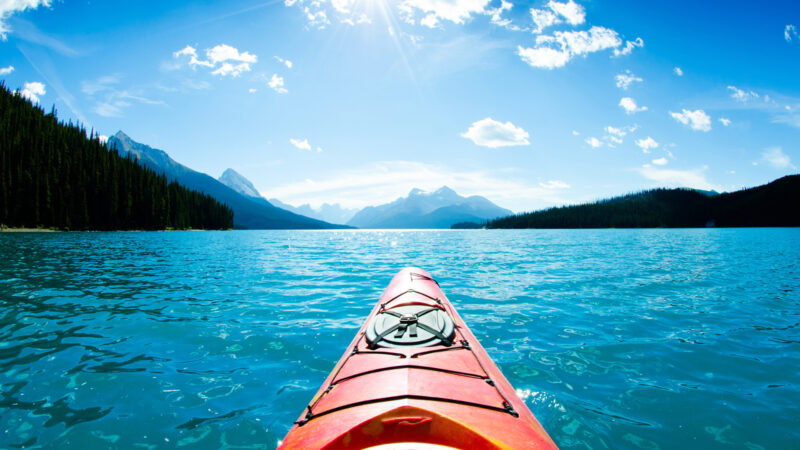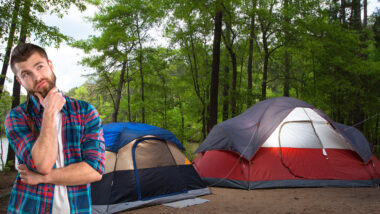Table of Contents Show
Canoe camping is an excellent way to explore the outdoors and get up close and personal with nature.
Whether you’re a beginner or an experienced paddler, there’s something for everyone.
This article will discuss what canoe camping is, the gear and supplies you need, and some of the best places to start your journey. With some preparation and helpful tips, you can be on an adventure in no time. Let’s hit the water!
What Is Canoe Camping?
Canoe camping is an exciting way to explore nature, combining the thrill of the open water with the adventure of backpacking. It requires you to prepare and have the correct gear, including knowledge of your athleticism and skill set.
This is crucial when backpacking or hiking for days at a time, but when canoe camping, it is imperative, as water can be more unpredictable than land.
If you’re on a guided canoe camping trip, the guides will provide much of the gear, food, and water you need. However, if you embark on an adventure without a professional guide, you must bring all the necessary equipment while out on the water and land.
You should plan ahead because you might need permits to paddle and camp along the route. But once you’ve prepared and obtained all the necessary permits, carrying your gear is often much easier in a canoe. You can take it with you.
Canoe camping also allows you to cover more ground than on a typical hiking excursion.
But where does that covered ground start and end? How do you find locations for canoe camping, and are there better places than others?
Where Should You Go Canoe Camping For The First Time?
We have the answers to help you start your first canoe camping excursion. When planning your first trip, choose a lake or reservoir for a one or two-night stay.
Paddling in still water is an excellent practice. You can focus on building your canoeing skills instead of where and when to put in and take out.
Once you have experience canoeing in still water, paddling in small rivers with currents is the next step. You’ll need to continually build upon your canoeing techniques to steer through various currents accurately.
You wouldn’t head out on a multi-day hiking adventure if you’ve never hiked before. The same goes for canoeing. You don’t head out on a camping trip without knowing how to canoe.
However, once you know, it’s time to explore all the country offers. You can visit the desert beauty of the Green River in Utah or the Boundary Waters in Minnesota. From the north to the south, we have some excellent recommendations for your first canoe camping adventure.
Green River, Utah
Labyrinth Canyon through Green River offers stretches of mild gradient and passes through incredible red sandstone cliffs. There are numerous launching and takeout points so that this journey can last from three days to two weeks.
The length depends on how much of the river you want to cover and what permits you wish to acquire. More adventurous types can tackle the remote Stillwater Canyon for a more extended canoeing excursion.
Everglades National Park, Florida
Canoeing in the Everglades is an experience like no other. From freshwater marshes, mangrove forests, and Florida Bay to rivers winding through 10,000 islands and along the 99-mile wilderness waterway, canoeing here showcases nature’s most dazzling beauty.
Whether you prefer canoe camping trips that last for a few hours or even several days, you can go with permits or hire guides for safety. The Everglades offer a canoeing adventure perfect for adventurers of all experience levels.
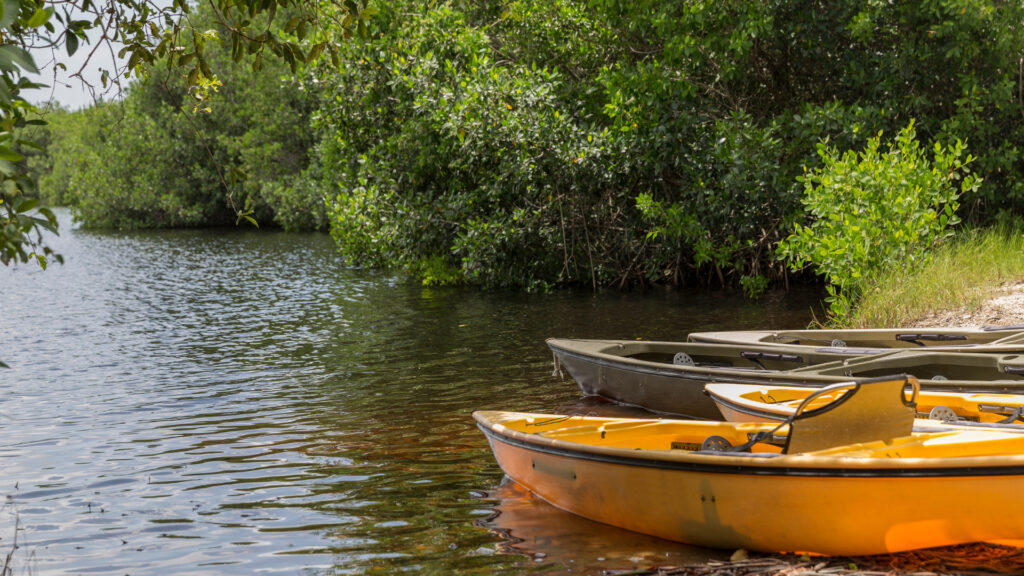
Boundary Waters Canoe Area Wilderness, Minnesota
Boundary Waters Canoe Area Wilderness in Minnesota is a must-visit destination for camping.
This canoe haven offers thousands of miles of pristine coves and picturesque cliffs. You’ll need permits, but it’s worth it when you canoe alongside teeming wildlife and nature’s incredible beauty.
Buffalo National River, Arkansas
Exploring the Buffalo River is an excellent way to enjoy a canoe trip in the Arkansas Ozarks. The river offers 151 miles of free-flowing water. It has floats with varying degrees of difficulty, perfect for first-timers and experienced canoeists alike.
One of the trendiest sections stretches from Steel Creek to Kyles Landing. It runs through the heart of Ponca Wilderness, past towering bluffs and side canyons. Many canoe trips start at Woolum and end at Gilbert, 29 miles downstream.
Whether you stay two nights, three nights, or more, there’s plenty to explore here.
Northern Forest Canoe Trail, New York to Maine
The Northern Forest Canoe Trail is no joke. Spanning 740 miles from New York to Maine, this canoeing trail is the longest inland water trail across the United States and Canada.
The water trail passes through Vermont, Quebec, and New Hampshire’s most picturesque waters. Most adventurers don’t attempt the whole thing at once; breaking it into manageable sections is much more common.
While you can be a beginner in some areas, you’ll need a strong canoe and skills to traverse its entire length.
What Do You Need to Pack for a Canoe Camping Trip?
We imagine you are pretty excited about your first canoe camping trip. But before you go, you’ll need some gear. To prepare for the equipment you’ll need, you should know what will be available at the sites you plan camping at while canoeing.
Will there be places for a campfire? What about picnic tables? Are there developed sites or only primitive ones? What about bathrooms, or will you be digging catholes?
Knowing what is available will help you determine your packing list. While there are many items you’ll need to pack, we have a list of the essential things.
And remember, this is canoe camping. Canoes travel on the water, so along with the items below, don’t forget waterproof containers. Dry gear is good gear.
Canoe
Whether canoe camping on a river or cruising around the lake, you want the right canoe for your specific needs. Generally, single and double canoes are available in various materials such as wood, poly, and fiberglass.
The best canoe material depends on multiple factors, including weight, cost, and durability.
Open-deck canoes offer room for gear and are ideal for slower-moving waters. Closed deck or white-water canoes are meant more for turbulent waters but have less gear space due to their design.
When canoeing, make sure you have selected the canoe that is best for your individual needs, so you get maximum enjoyment from your excursion.
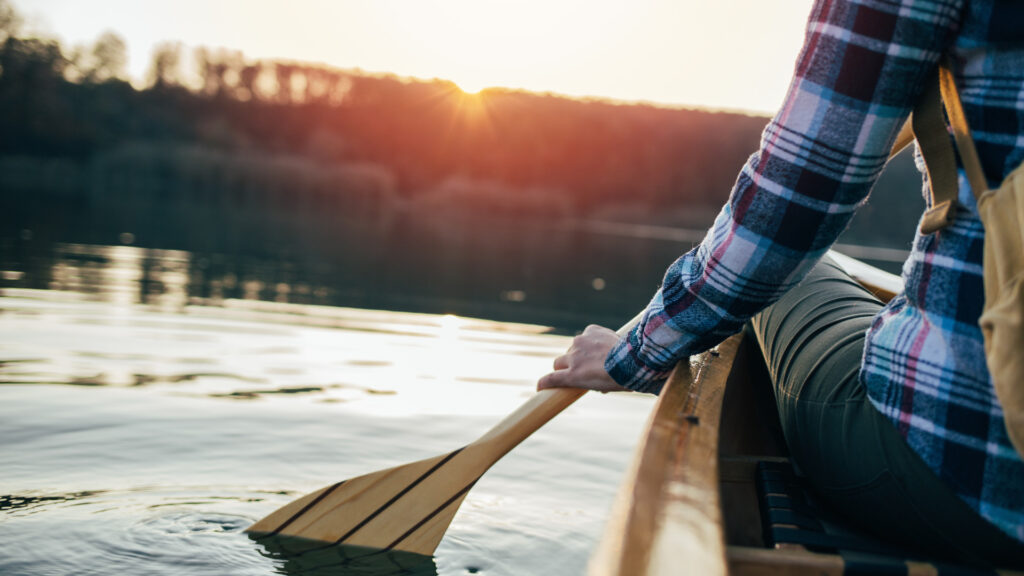
GPS + hard copy waterproof map
Canoe camping trip gear is incomplete without a GPS and a hard copy waterproof map for when technology fails.
Batteries can die in cold weather. You can lose or drop equipment in the water. Cell signals are never a guarantee, especially in remote areas.
It is crucial to have these navigation tools, and canoe campers need to know how to use them. A basic understanding of orienteering and how to read a map and compass are essential skills that you must possess before heading into open waters and wooded forests.
With this knowledge and versatile tools, campers can set off with confidence, knowing they’ll find their way safely.
Rain Gear and Proper Shoes
When canoe camping, it is essential to pack the appropriate rain gear and shoes. Rain can come from nowhere, so you always need a waterproof jacket. Staying warm and dry will make your adventure more enjoyable and helps prevent health hazards due to cold body temperatures.
You’ll want a sturdy pair of shoes that can withstand rough terrain during hikes or portages. Ensure they’re also appropriate for canoeing. Flip flops may sound comfortable, but they offer no protection from water. The correct rain gear and footwear help ensure the best adventure in and out of the water.
Tent and Tarp
Canoe camping is a trendy outdoor pastime, often focusing on exploring remote or untouched areas. This is why the correct tents and tarps are essential. They must be convenient to transport, pack, and set up while offering comfort throughout the night.
A tarp can double as an awning in the daytime, allowing you to stay dry during showers and keep the sun off your back. It provides extra protection from the elements, and by keeping you dry, you’ll have warmth during cooler evenings.
Sleeping Pad and Bag
The same rule goes for your sleeping pad and bag. Both must be compact and convenient to set up and put away. However, they also need to provide the warmth and comfort you need to rest.
Don’t buy the cheapest bag and pad on the market. Instead, do your due diligence by determining what cold-weather bag will keep you warm and dry where you will be camping. The more rest you have at night, the more you’ll paddle and enjoy the trip.
Keep in Mind: Looking to build your own RV Camper Pad? Click the link to learn how
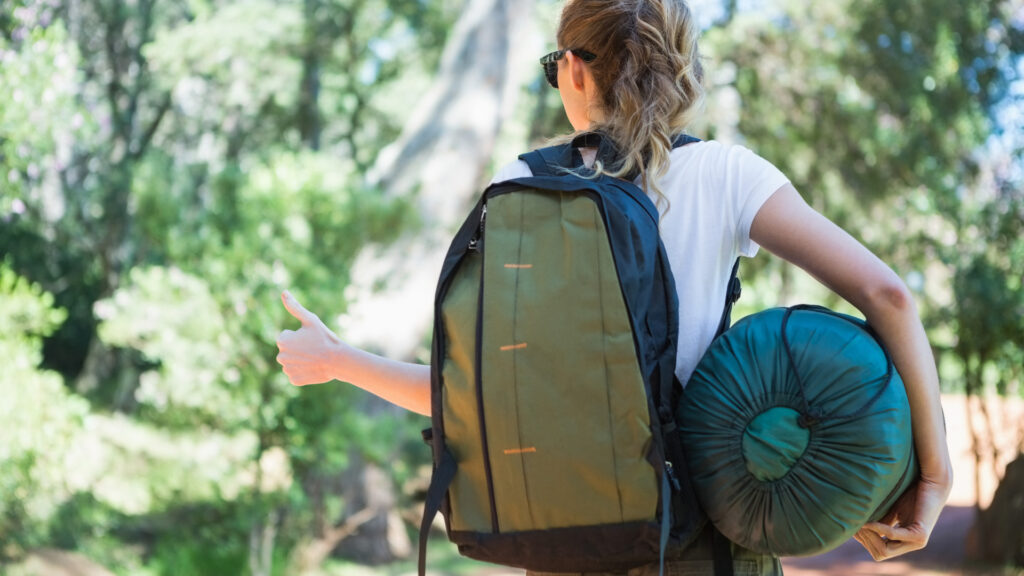
Food and Water
The significant difference between canoe camping and backpacking might be the amount of food and water you can carry with your canoe.
Because your primary carrier is a canoe, you’ll have more space. If you’ve ever been car camping, it’s similar to that. But be careful; bringing everything but the kitchen sink is not the best policy.
You’ll still want to plan your food consumption by how many days you’ll be camping. Because you’re in the elements, bringing packaged foods versus fresh is generally your best bet. Think of dehydrated potatoes, packaged meats, and trail mix.
Regarding fruits and vegetables, it’s best to stick to foods that travel well. You can take carrots and blueberries, for example.
For water, ensure you have containers to boil, store, and drink water. You’ll also need ways to purify water.
Bring a couple of options, including water filtration systems, UV light systems, and water purification tablets. Having more than one way to access clean water ensures you’ll always be hydrated.
Cooking Set
We’ve already warned you about bringing everything but the kitchen sink. The same rule holds with cooking tools. Once you have planned your menu, you’ll know what types of cooking tools you’ll need. Bring only those.
Like when backpacking, packing a compact cooking set versus large cooking pots and pans will save space and weight. It will make cooking and cleaning up while dining outdoors much more straightforward than searching through a huge plastic bin of random cookware. Save that for car camping.
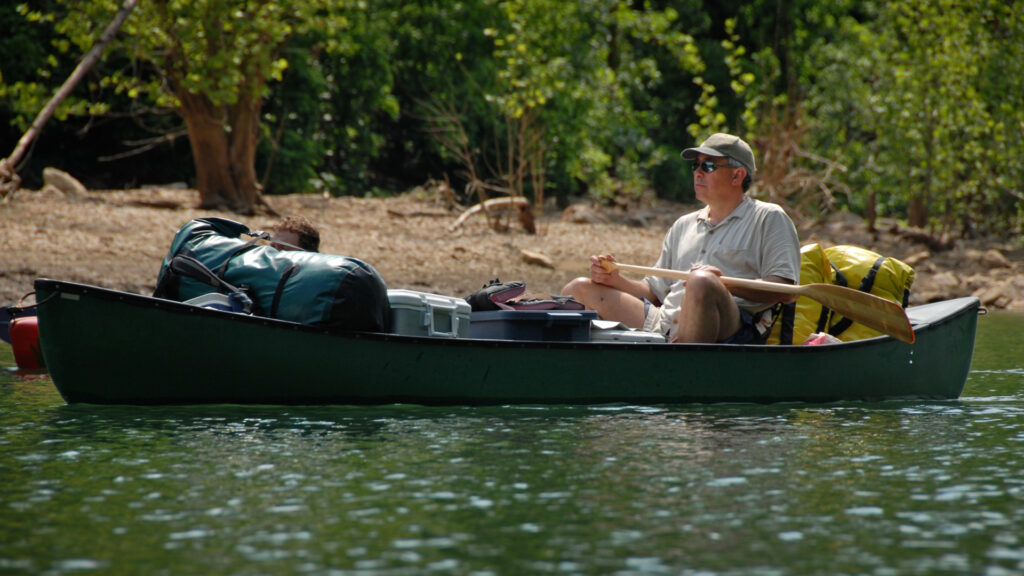
Bear Canister
You might think storing your food and other goods in the canoe overnight will keep it safe. It will until a bear or other creature catches a whiff of it. Keeping wildlife wild is imperative.
Not only does it protect the animals, but it also keeps the lands we love open for camping.
Bring a bear canister and store your food and other smelly goods like toothpaste and deodorant whenever you are not using them. Then keep the canister away from your sleeping quarters to prevent encounters with wildlife.
There’s not much worse than losing all of your food to wildlife. The remainder of your canoe camping excursion won’t be as enjoyable without your food.
Keep in Mind: Will a Bear Break Into Your RV? Try these Tips to help Keep Bears Away
How Many Miles Can You Canoe in a Day?
The food and other gear you have could decide how many miles you can canoe in a day. Camping sites can also contribute to that number.
Generally, you can expect to canoe around 15-20 miles daily, depending on your desire for exploration, determination, and physical fitness levels.
For most people, three and a half hours of paddling is about 10 miles and generally takes around seven hours of canoeing with a few breaks.
Canoe Camping Is an Epic Adventure to Do With Friends
Canoe camping is an epic adventure when you do it with friends, and the rewards are immense. You can enjoy breathtaking views and peaceful nature while bonding with your co-adventurers.
It is a unique experience that will leave you returning for more. So why not give it a try? Where will you head for your first canoe camping excursion?




